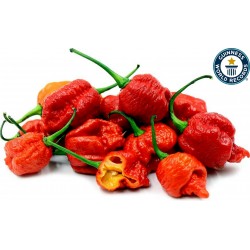Menu
-
MenuBack
- Home
-
Categories
-
-
Categories
-
Vegetable Seeds
-
Varieties by Country
- Varieties from Armenia
- Varieties from BiH
- Varieties from Croatia
- Varieties from France
- Varieties from Germany
- Varieties from Greece
- Varieties from Hungary
- Varieties from India
- Varieties from Italy
- Varieties from Japan
- Varieties from North Macedonia
- Varieties from Peru
- Varieties from Russia
- Varieties from Serbia
- Varieties from Slovenia
- Varieties from Spain
- Varieties from Thailand
- Varieties from Turkey
- Varieties from USA
- Tomato Seeds
- Corn Seeds
- Gourd family
- Bean family
- Cucumber Seeds
- Pepper Seeds
- Carrot family
- Onion family
- Lettuce Seeds
- Potato family
- Cabbage family
- Radish Seeds
- Beetroot family
- Watermelon Seeds
- Melon Seeds
- Cauliflower Seeds
- Sunflower family
-
Varieties by Country
- Fruit Seeds
- Chili - Habanero Seeds
- Medicinal Herb Seeds
- Climbing Plants Seeds
- Trees Bonsai Seeds
- Palm Seeds
- Ornamental Grasses Seeds
- Tobacco Seeds
-
Vegetable Seeds
-
-
-
-
- NEW PRODUCTS
- Create account
- Delivery - Payment
- FAQ
List of products by brand Seeds Gallery
Seeds produced by Seeds Gallery
Seeds produced by Seeds Gallery
There are 408 products.
Showing 1-12 of 408 item(s)
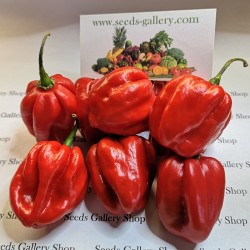
100 Seeds Habanero Red
Price
€5.45
SKU: C 19 R
Seeds Gallery Com,
5/
5
<h2><strong>100 Seeds Habanero Red (Capsicum chinense)</strong></h2>
<h2><strong><span style="color: #ff0000;">Price for Package of 100 seeds.</span></strong></h2>
<div>The habanero is a variety of chili pepper. Unripe habaneros are green, and they color as they mature. The most common color variants are orange and red, but the fruit may also be white, brown, yellow, green, or purple. Typically, a ripe habanero chili is 2–6 cm (0.8–2.4 in) long. Habanero chilis are very hot, rated 100,000–650,000 on the Scoville scale. The habanero's heat, its flavor, and its floral aroma have made it a popular ingredient in hot sauces and spicy foods.<br><br>The name indicates something or someone from La Habana (Havana). In English, it is sometimes spelled and pronounced habañero, the tilde being added as a hyperforeignism patterned after jalapeño.<br><br><strong>Origin and current use</strong><br>The habanero chili comes from the Amazon, from which it was spread, reaching Mexico. A specimen of a domesticated habanero plant, dated at 8,500 years old, was found at an archaeological site in Peru.[citation needed] An intact fruit of a small domesticated habanero, found in pre-ceramic levels in Guitarrero Cave in the Peruvian highlands, was dated to 6500 BC.<br><br>The habanero chili was disseminated by Spanish colonists to other areas of the world, to the point that 18th-century taxonomists mistook China for its place of origin and called it Capsicum chinense ("the Chinese pepper").<br><br>Today, the largest producer is the Yucatán Peninsula, in Mexico. Habaneros are an integral part of Yucatecan food, accompanying most dishes, either in natural form or purée or salsa. Other modern producers include Belize, Panama, Costa Rica, Colombia, Ecuador, and parts of the United States, including Texas, Idaho, and California.<br><br>The Scotch bonnet is often compared to the habanero, since they are two varieties of the same species, but they have different pod types. Both the Scotch bonnet and the habanero have thin, waxy flesh. They have a similar heat level and flavor. Both varieties average around the same level of pungency, but the actual degree varies greatly from one fruit to another according to genetics, growing methods, climate, and plant stress.<br><br>In 1999, the habanero was listed by Guinness World Records as the world's hottest chili, but it has since been displaced by other peppers. The Bhut jolokia (or ghost pepper) and Trinidad moruga scorpion have since been identified as native Capsicum chinense subspecies even hotter than the habanero. Breeders constantly crossbreed subspecies to attempt to create cultivars that will break the record on the Scoville scale. One example is the Carolina Reaper, a cross between a Bhut jolokia pepper with a particularly pungent red habanero.<br><br><strong>Cultivation</strong><br>Habaneros thrive in hot weather. Like all peppers, the habanero does well in an area with good morning sun and in soil with a pH level around 5 to 6 (slightly acidic). Habaneros which are watered daily produce more vegetative growth but the same number of fruit, with lower concentrations of capsaicin, as compared to plants which are watered only when dry (every seven days). Overly moist soil and roots will produce bitter-tasting peppers. Daily watering during flowering and early setting of fruit helps prevent flower and immature fruit from dropping, but flower dropping rates are reported to often reach 90% even in ideal conditions.<br><br>The habanero is a perennial flowering plant, meaning that with proper care and growing conditions, it can produce flowers (and thus fruit) for many years. Habanero bushes are good candidates for a container garden. In temperate climates, though, it is treated as an annual, dying each winter and being replaced the next spring. In tropical and subtropical regions, the habanero, like other chiles, will produce year round. As long as conditions are favorable, the plant will set fruit continuously.<br><br><strong>Cultivars</strong><br>Several growers have attempted to selectively breed habanero plants to produce hotter, heavier, and larger peppers. Most habaneros rate between 200,000 and 300,000 on the Scoville scale. In 2004, researchers in Texas created a mild version of the habanero, but retained the traditional aroma and flavor. The milder version was obtained by crossing the Yucatán habanero pepper with a heatless habanero from Bolivia over several generations.</div>
<div></div>
<div>Black habanero is an alternative name often used to describe the dark brown variety of habanero chilis (although they are slightly different, being slightly smaller and slightly more sphere-shaped). Some seeds have been found which are thought to be over 7,000 years old. The black habanero has an exotic and unusual taste, and is hotter than a regular habanero with a rating between 400,000 and 450,000 Scoville units. Small slivers used in cooking can have a dramatic effect on the overall dish. Black habaneros take considerably longer to grow than other habanero chili varieties. In a dried form, they can be preserved for long periods of time, and can be reconstituted in water then added to sauce mixes. Previously known as habanero negro, or by their Nahuatl name, their name was translated into English by spice traders in the 19th century as "black habanero". The word "chocolate" was derived from the Nahuatl word, xocolātl [ʃoˈkolaːt͡ɬ], and was used in the description, as well (as "chocolate habanero"), but it proved to be unpronounceable to the British traders, so it was simply named "black habanero".<br><br>A 'Caribbean Red,' a cultivar within the habanero family, has a citrusy and slightly smoky flavor, with a Scoville rating ranging from 300,000 to 445,000 Scoville units.</div><script src="//cdn.public.n1ed.com/G3OMDFLT/widgets.js"></script>
C 19 R (100 S)

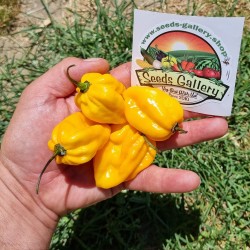
100 Seeds Habanero Yellow
Price
€5.95
SKU: C 19 Y
Seeds Gallery Com,
5/
5
<h2 class=""><strong>100 Seeds Habanero Yellow (Capsicum chinense)</strong></h2>
<h2><strong><span style="color: #ff0000;">Price for Package of 100 seeds.</span></strong></h2>
<div>The habanero is a variety of chili pepper. Unripe habaneros are green, and they color as they mature. The most common color variants are orange and red, but the fruit may also be white, brown, yellow, green, or purple. Typically, a ripe habanero chili is 2–6 cm (0.8–2.4 in) long. Habanero chilis are very hot, rated 100,000–650,000 on the Scoville scale. The habanero's heat, its flavor, and its floral aroma have made it a popular ingredient in hot sauces and spicy foods.<br><br>The name indicates something or someone from La Habana (Havana). In English, it is sometimes spelled and pronounced habañero, the tilde being added as a hyperforeignism patterned after jalapeño.<br><br><strong>Origin and current use</strong><br>The habanero chili comes from the Amazon, from which it was spread, reaching Mexico. A specimen of a domesticated habanero plant, dated at 8,500 years old, was found at an archaeological site in Peru.[citation needed] An intact fruit of a small domesticated habanero, found in pre-ceramic levels in Guitarrero Cave in the Peruvian highlands, was dated to 6500 BC.<br><br>The habanero chili was disseminated by Spanish colonists to other areas of the world, to the point that 18th-century taxonomists mistook China for its place of origin and called it Capsicum chinense ("the Chinese pepper").<br><br>Today, the largest producer is the Yucatán Peninsula, in Mexico. Habaneros are an integral part of Yucatecan food, accompanying most dishes, either in natural form or purée or salsa. Other modern producers include Belize, Panama, Costa Rica, Colombia, Ecuador, and parts of the United States, including Texas, Idaho, and California.<br><br>The Scotch bonnet is often compared to the habanero, since they are two varieties of the same species, but they have different pod types. Both the Scotch bonnet and the habanero have thin, waxy flesh. They have a similar heat level and flavor. Both varieties average around the same level of pungency, but the actual degree varies greatly from one fruit to another according to genetics, growing methods, climate, and plant stress.<br><br>In 1999, the habanero was listed by Guinness World Records as the world's hottest chili, but it has since been displaced by other peppers. The Bhut jolokia (or ghost pepper) and Trinidad moruga scorpion have since been identified as native Capsicum chinense subspecies even hotter than the habanero. Breeders constantly crossbreed subspecies to attempt to create cultivars that will break the record on the Scoville scale. One example is the Carolina Reaper, a cross between a Bhut jolokia pepper with a particularly pungent red habanero.<br><br><strong>Cultivation</strong><br>Habaneros thrive in hot weather. Like all peppers, the habanero does well in an area with good morning sun and in soil with a pH level around 5 to 6 (slightly acidic). Habaneros which are watered daily produce more vegetative growth but the same number of fruit, with lower concentrations of capsaicin, as compared to plants which are watered only when dry (every seven days). Overly moist soil and roots will produce bitter-tasting peppers. Daily watering during flowering and early setting of fruit helps prevent flower and immature fruit from dropping, but flower dropping rates are reported to often reach 90% even in ideal conditions.<br><br>The habanero is a perennial flowering plant, meaning that with proper care and growing conditions, it can produce flowers (and thus fruit) for many years. Habanero bushes are good candidates for a container garden. In temperate climates, though, it is treated as an annual, dying each winter and being replaced the next spring. In tropical and subtropical regions, the habanero, like other chiles, will produce year round. As long as conditions are favorable, the plant will set fruit continuously.<br><br><strong>Cultivars</strong><br>Several growers have attempted to selectively breed habanero plants to produce hotter, heavier, and larger peppers. Most habaneros rate between 200,000 and 300,000 on the Scoville scale. In 2004, researchers in Texas created a mild version of the habanero, but retained the traditional aroma and flavor. The milder version was obtained by crossing the Yucatán habanero pepper with a heatless habanero from Bolivia over several generations.</div>
<div></div>
<div>Black habanero is an alternative name often used to describe the dark brown variety of habanero chilis (although they are slightly different, being slightly smaller and slightly more sphere-shaped). Some seeds have been found which are thought to be over 7,000 years old. The black habanero has an exotic and unusual taste, and is hotter than a regular habanero with a rating between 400,000 and 450,000 Scoville units. Small slivers used in cooking can have a dramatic effect on the overall dish. Black habaneros take considerably longer to grow than other habanero chili varieties. In a dried form, they can be preserved for long periods of time, and can be reconstituted in water then added to sauce mixes. Previously known as habanero negro, or by their Nahuatl name, their name was translated into English by spice traders in the 19th century as "black habanero". The word "chocolate" was derived from the Nahuatl word, xocolātl [ʃoˈkolaːt͡ɬ], and was used in the description, as well (as "chocolate habanero"), but it proved to be unpronounceable to the British traders, so it was simply named "black habanero".<br><br>A 'Caribbean Red,' a cultivar within the habanero family, has a citrusy and slightly smoky flavor, with a Scoville rating ranging from 300,000 to 445,000 Scoville units.</div>
<script src="//cdn.public.n1ed.com/G3OMDFLT/widgets.js"></script>
C 19 Y (100 S)

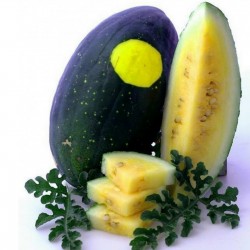
100 Seeds Yellow Fleshed...
Price
€10.00
SKU: V 40 (10g)
Seeds Gallery Com,
5/
5
<h2 class=""><strong>100 Seeds Yellow Fleshed Watermelon Moon and Stars</strong></h2>
<h2><strong style="color: #ff0000;">Price for Package of<strong> 100 (10g) seeds.</strong></strong></h2>
<p>USDA Certified Organic. 90 days. Early 1900s GA family heirloom. Introduced 1987 by SESE. Years ago, a melon of this description was routinely shipped from Bermuda to some Southern states around Christmas time. Good flavor, the sweetest Moon and Stars variety. 15-35 lb fruits. Has some tolerance to disease and drought. Rinds has many small yellow stars and some moons. To serve, try halving melons and scooping out the insides using a melon ball scoop. Scallop the edges and fill with melon balls of red and yellow watermelon, muskmelon, and assorted fruit. </p>
<table width="0" class="responsive-table" style="height: 732px; border-style: solid; width: 0px; border-color: #066b0f; float: left;">
<tbody>
<tr style="height: 58px;">
<td colspan="2" style="width: 755px; height: 58px; border-style: solid; border-color: #0b7014;">
<p><span style="font-family: georgia, palatino, serif; font-size: 11pt; color: #000000;"><strong>Sowing Instructions</strong></span></p>
</td>
</tr>
<tr style="height: 58px;">
<td style="width: 207px; height: 58px; border-style: solid; border-color: #0b7014;">
<p><span style="font-family: georgia, palatino, serif; font-size: 11pt; color: #000000;"><strong>Pretreat:</strong></span></p>
</td>
<td style="width: 542px; height: 58px; border-style: solid; border-color: #0b7014;">
<p><span style="font-family: georgia, palatino, serif; font-size: 11pt; color: #000000;">Damage the membranes of the seed. But not the sprouts! See Picture</span></p>
</td>
</tr>
<tr style="height: 58px;">
<td style="width: 207px; height: 58px; border-style: solid; border-color: #0b7014;">
<p><span style="font-family: georgia, palatino, serif; font-size: 11pt; color: #000000;"><strong>Stratification:</strong></span></p>
</td>
<td style="width: 542px; height: 58px; border-style: solid; border-color: #0b7014;">
<p><span style="font-family: georgia, palatino, serif; font-size: 11pt; color: #000000;">0</span></p>
</td>
</tr>
<tr style="height: 58px;">
<td style="width: 207px; height: 58px; border-style: solid; border-color: #0b7014;">
<p><span style="font-family: georgia, palatino, serif; font-size: 11pt; color: #000000;"><strong>Sowing Time:</strong></span></p>
</td>
<td style="width: 542px; height: 58px; border-style: solid; border-color: #0b7014;">
<p><span style="font-family: georgia, palatino, serif; font-size: 11pt; color: #000000;">all year round</span></p>
</td>
</tr>
<tr style="height: 58px;">
<td style="width: 207px; height: 58px; border-style: solid; border-color: #0b7014;">
<p><span style="font-family: georgia, palatino, serif; font-size: 11pt; color: #000000;"><strong>Sowing Depth:</strong></span></p>
</td>
<td style="width: 542px; height: 58px; border-style: solid; border-color: #0b7014;">
<p><span style="font-family: georgia, palatino, serif; font-size: 11pt; color: #000000;">0,5-1 cm</span></p>
</td>
</tr>
<tr style="height: 58px;">
<td style="width: 207px; height: 58px; border-style: solid; border-color: #0b7014;">
<p><span style="font-family: georgia, palatino, serif; font-size: 11pt; color: #000000;"><strong>Sowing Mix:</strong></span></p>
</td>
<td style="width: 542px; height: 58px; border-style: solid; border-color: #0b7014;">
<p><span style="font-family: georgia, palatino, serif; font-size: 11pt; color: #000000;">Coir or sowing mix + sand or perlite</span></p>
</td>
</tr>
<tr style="height: 76px;">
<td style="width: 207px; height: 76px; border-style: solid; border-color: #0b7014;">
<p><span style="font-family: georgia, palatino, serif; font-size: 11pt; color: #000000;"><strong>Germination temperature:</strong></span></p>
</td>
<td style="width: 542px; height: 76px; border-style: solid; border-color: #0b7014;">
<p><span style="font-family: georgia, palatino, serif; font-size: 11pt; color: #000000;">20 ° C</span></p>
</td>
</tr>
<tr style="height: 58px;">
<td style="width: 207px; height: 58px; border-style: solid; border-color: #0b7014;">
<p><span style="font-family: georgia, palatino, serif; font-size: 11pt; color: #000000;"><strong>Location:</strong></span></p>
</td>
<td style="width: 542px; height: 58px; border-style: solid; border-color: #0b7014;">
<p><span style="font-family: georgia, palatino, serif; font-size: 11pt; color: #000000;">bright + keep constantly moist not wet</span></p>
</td>
</tr>
<tr style="height: 76px;">
<td style="width: 207px; height: 76px; border-style: solid; border-color: #0b7014;">
<p><span style="font-family: georgia, palatino, serif; font-size: 11pt; color: #000000;"><strong>Germination Time:</strong></span></p>
</td>
<td style="width: 542px; height: 76px; border-style: solid; border-color: #0b7014;">
<p><span style="font-family: georgia, palatino, serif; font-size: 11pt; color: #000000;">1-6 weeks</span></p>
</td>
</tr>
<tr style="height: 58px;">
<td style="width: 207px; height: 58px; border-style: solid; border-color: #0b7014;">
<p><span style="font-family: georgia, palatino, serif; font-size: 11pt; color: #000000;"><strong>Watering:</strong></span></p>
</td>
<td style="width: 542px; height: 58px; border-style: solid; border-color: #0b7014;">
<p><span style="font-family: georgia, palatino, serif; font-size: 11pt; color: #000000;">Water regularly during the growing season</span></p>
</td>
</tr>
<tr style="height: 58px;">
<td style="width: 207px; height: 58px; border-style: solid; border-color: #0b7014;">
<p><span style="font-family: georgia, palatino, serif; font-size: 11pt; color: #000000;"><strong> </strong></span></p>
</td>
<td style="width: 542px; height: 58px; border-style: solid; border-color: #0b7014;">
<p><span style="font-family: georgia, palatino, serif; font-size: 11pt; color: #000000;"><strong><em>Copyright © 2012</em></strong> <strong><em>Seeds Gallery - All Rights Reserved.</em></strong></span></p>
</td>
</tr>
</tbody>
</table>
V 40 (10g)

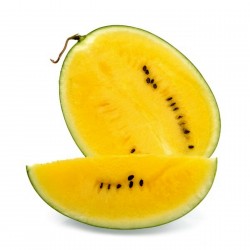
100 Seeds Yellow Watermelon...
Price
€10.00
SKU: V 255
Seeds Gallery Com,
5/
5
<!DOCTYPE html>
<html>
<head>
<meta http-equiv="Content-Type" content="text/html; charset=UTF-8" />
</head>
<body>
<h2><strong>Yellow Watermelon JANOSIK 100 Seeds</strong></h2>
<h2><span style="color: #ff0000;"><strong>Price for Package of 100 seeds.</strong></span></h2>
<p>A very unusual and highly prized Polish melon variety is delicious and different. Yellow Watermelon ‘Janosik’ is the first true Polish watermelon variety whose flesh is yellow. This species grows well in temperate climates and produces large fruit, they grow 3.5 to 5.5 kilograms in weight. The rind of each fruit is dark green. Yellow Watermelon ‘Janosik’ has juicy and very sweet flesh with a relatively small amount of seeds</p>
</body>
</html>
V 255 (100 S)

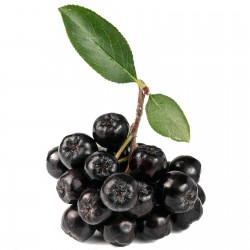
1000 Seeds Chokeberry...
Price
€11.00
SKU: V 29 (4g)
Seeds Gallery Com,
5/
5
<h2><strong>1000 Seeds Chokeberry (Aronia melanocarpa)</strong></h2>
<h2><span style="color: #ff0000;" class=""><strong>Price for Package of 1000 seeds.</strong></span></h2>
<p>Aronia melanocarpa is an extraordinary medicine plant that has been developed in Poland. It has an incredible array of health qualities. Known as Chokeberry, the native Americans used it to prepare pemmican (dried meat). It has a higher concentration of vitamin C than blackcurrants, but it also contains a host of other valuable substances, especially antioxidants, polyphenols, bioflavonoids, and tannins. It is a very hardy and vigorous plant and can survive most conditions.</p>
<h3><strong>Wikipedia</strong>:</h3>
<p><i><b>Aronia</b></i><span> </span>is a genus of<span> </span>deciduous<span> </span>shrubs, the<span> </span><b>chokeberries</b>, in the family<span> </span>Rosaceae<span> </span>native to eastern North America and most commonly found in wet woods and swamps.<span> </span>The genus is usually considered to contain two or three<span> </span>species, one of which is<span> </span>naturalized<span> </span>in Europe.</p>
<p>Chokeberries are cultivated as<span> </span>ornamental plants<span> </span>and as<span> </span>food products. The sour berries, or<span> </span><b>Aronia berries</b>, can be eaten raw off the bush, but are more frequently processed. They can be found in wine, jam, syrup, juice, soft spreads, tea, salsa,<span> </span>chili starters, extracts, beer, ice cream,<span> </span>gummies,<span> </span>and<span> </span>tinctures.<span> </span>The name "chokeberry" comes from the<span> </span>astringency<span> </span>of the fruits, which creates the sensation of making one's mouth pucker.</p>
<p><i>Chokeberries</i><span> </span>are often mistakenly called<span> </span><i>chokecherries</i>, the<span> </span>common name<span> </span>for<span> </span><i>Prunus virginiana</i>. Further adding to the ambiguity, a<span> </span>variety<span> </span>of<span> </span><i>Prunus virginiana</i><span> </span>is<span> </span><i>melanocarpa</i>,<sup id="cite_ref-9" class="reference">[9]</sup><span> </span>and readily confused with<span> </span><i>black chokeberry</i><span> </span>because it is commonly referred to as "black chokeberry" or "aronia". Aronia berries and chokecherries both contain<span> </span>polyphenolic<span> </span>compounds, such as<span> </span>anthocyanins, yet the two plants are distantly related within the family Rosaceae.</p>
<p>The<span> </span>leaves<span> </span>are alternate, simple, and<span> </span>oblanceolate<span> </span>with<span> </span>crenate<span> </span>margins and<span> </span>pinnate<span> </span>venation; in autumn the leaves turn a bold red color. Dark<span> </span>trichomes<span> </span>are present on the upper midrib surface. The<span> </span>flowers<span> </span>are small, with 5<span> </span>petals<span> </span>and 5<span> </span>sepals, and produced in<span> </span>corymbs<span> </span>of 10–25 together.<span> </span>Hypanthium<span> </span>is urn-shaped. The fruit is a small<span> </span>pome, with an<span> </span>astringent<span> </span>flavor.</p>
<p><i>Aronia</i><span> </span>has been thought to be closely related to<span> </span><i>Photinia</i>, and has been included in that genus in some classifications,<sup id="cite_ref-10" class="reference">[10]</sup><span> </span>but botanist Cornelis Kalkman observed that a combined genus should be under the older name<span> </span><i>Aronia</i>.<sup id="cite_ref-Kalkman_11-0" class="reference">[11]</sup><span> </span>The combined genus contains about 65 species.<sup id="cite_ref-weakley_12-0" class="reference">[12]</sup><span> </span>In 2004, Kalkman expressed doubt about the<span> </span>monophyly<span> </span>of the combined group, and new molecular studies confirm this.<sup id="cite_ref-Potter_13-0" class="reference">[13]</sup><sup id="cite_ref-Campbell_14-0" class="reference">[14]</sup><span> </span>They do not place these two genera together or even near one another.</p>
<p>In eastern North America are two well-known species, named after their fruit color, red chokeberry and black chokeberry, plus a purple chokeberry whose origin is a natural hybrid of the two.<sup id="cite_ref-weakley_12-1" class="reference">[12]</sup><span> </span>A fourth species,<span> </span><i>Aronia mitschurinii</i>, that apparently originated in cultivation, is also known as<span> </span><i>Sorbaronia mitschurinii</i>.</p>
<h2><span class="mw-headline" id="Cultivation">Cultivation</span></h2>
<p>Aronia is considered cold hardy and heat tolerant in<span> </span>USDA<span> </span>Zones 3 to 8.<sup id="cite_ref-usda_17-0" class="reference">[17]</sup><sup id="cite_ref-18" class="reference">[18]</sup><span> </span>Aronia plants grow well both in<span> </span>orchard-type rows or set as<span> </span>landscape<span> </span>elements, including several varieties in 3 to 12 foot heights.<sup id="cite_ref-usda_17-1" class="reference">[17]</sup></p>
<h3><span class="mw-headline" id="Products_and_uses">Products and uses</span></h3>
<p>The chokeberries are attractive<span> </span>ornamental plants<span> </span>for gardens. They are naturally understory and woodland edge plants, and grow well when planted under<span> </span>trees. Chokeberries are resistant to drought, insects, pollution, and disease. A number of<span> </span>cultivars, including<span> </span><i>A. arbutifolia</i><span> </span>'Brilliant' and<span> </span><i>A. melanocarpa</i><span> </span>'Autumn magic', have been selected for their striking fall leaf color.</p>
<p>An aronia wine is made in<span> </span>Lithuania. In<span> </span>Poland, aronia berries are added to jams and juices or dried to make a herbal<span> </span>tea<span> </span>sometimes blended with other ingredients, such as<span> </span>blackcurrant.<sup id="cite_ref-mckay_19-0" class="reference">[19]</sup><span> </span>In<span> </span>Bosnia and Herzegovina, the berries are sold fresh and frozen or made into juices, jams and teas.<sup id="cite_ref-Fresh_Fruit_Portal_20-0" class="reference">[20]</sup><span> </span>Aronia is also used as a<span> </span>flavoring<span> </span>or<span> </span>colorant<span> </span>for beverages or yogurts.<sup id="cite_ref-mckay_19-1" class="reference">[19]</sup><span> </span>Juice from the ripe berries is<span> </span>astringent, semi-sweet (moderate sugar content), sour (low<span> </span>pH), and contains a low level of<span> </span>vitamin C.<sup id="cite_ref-21" class="reference">[21]</sup><span> </span>The berries have a tart<span> </span>flavor<span> </span>and, in addition to juice, can be baked into breads.<sup id="cite_ref-mckay_19-2" class="reference">[19]</sup><span> </span>In the United States and Canada, aronia<span> </span>juice concentrate<span> </span>is used in manufactured juice blends.</p>
<h3><span class="mw-headline" id="Polyphenol_content">Polyphenol content</span></h3>
<p><i>Aronia melanocarpa</i><span> </span>(black chokeberry) has attracted scientific interest due to its deep purple, almost black<span> </span>pigmentation<span> </span>that arises from dense contents of<span> </span>polyphenols, especially<span> </span>anthocyanins. Total polyphenol content is 1752 mg per 100 g dry weight,<sup id="cite_ref-Phenol-Explorer_22-0" class="reference">[22]</sup><span> </span>anthocyanin content is 1480 mg per 100 g dry weight, and<span> </span>proanthocyanidin<span> </span>concentration is 664 mg per 100 g fresh weight.<sup id="cite_ref-Wu_23-0" class="reference">[23]</sup><sup id="cite_ref-24" class="reference">[24]</sup><span> </span>These values are among the highest measured in plants to date. The black aronia species contains higher levels of anthocyanins than purple (<i>Aronia prunifolia</i>) or red aronia (<i>Aronia arbutifolia</i>), whereas red and purple aronia are richer in phenolic acid and proanthocyanins.<sup id="cite_ref-pmid23941506_25-0" class="reference">[25]</sup></p>
<p>The plant produces these pigments mainly in the leaves and skin of the berries to protect the pulp and seeds from constant exposure to<span> </span>ultraviolet radiation<span> </span>and production of<span> </span>free radicals.<sup id="cite_ref-simon_26-0" class="reference">[26]</sup><sup id="cite_ref-27" class="reference">[27]</sup><sup id="cite_ref-28" class="reference">[28]</sup><span> </span>By absorbing<span> </span>UV<span> </span>rays in the<span> </span>blue-purple spectrum, leaf and skin pigments filter intense sunlight, serve antioxidant functions and thereby have a role assuring regeneration of the species. Brightly colorful pigmentation also attracts birds and other animals to consume the fruit and disperse the seeds in their droppings.<sup id="cite_ref-simon_26-1" class="reference">[26]</sup><sup id="cite_ref-29" class="reference">[29]</sup></p>
<p>Analysis of polyphenols in chokeberries has identified the following individual chemicals (among hundreds known to exist in the plant kingdom):<span> </span>cyanidin-3-galactoside, cyanidin-3-arabinoside,<span> </span>quercetin-3-glycoside,<span> </span>epicatechin,<span> </span>caffeic acid,<span> </span>delphinidin,<span> </span>petunidin,<span> </span>pelargonidin,<span> </span>peonidin, and<span> </span>malvidin.<sup id="cite_ref-Wu_23-1" class="reference">[23]</sup><sup id="cite_ref-pmid23941506_25-1" class="reference">[25]</sup><sup id="cite_ref-30" class="reference">[30]</sup><span> </span>All these except caffeic acid are members of the<span> </span>flavonoid<span> </span>category of phenolics.</p>
<p>For reference to phenolics, flavonoids, anthocyanins, and similar plant-derived phytochemicals,<sup id="cite_ref-Phenol-Explorer_22-1" class="reference">[22]</sup><span> </span>Wikipedia has a<span> </span>list of phytochemicals and foods in which they are prominent.</p>
<div>
<table border="1" cellspacing="0" cellpadding="0">
<tbody>
<tr>
<td colspan="2" valign="top" width="100%">
<p><span style="color: #008000;"><strong>Sowing Instructions</strong></span></p>
</td>
</tr>
<tr>
<td valign="top" nowrap="nowrap">
<p><span style="color: #008000;"><strong>Propagation:</strong></span></p>
</td>
<td valign="top">
<p><span style="color: #008000;">Seeds</span></p>
</td>
</tr>
<tr>
<td valign="top" nowrap="nowrap">
<p><span style="color: #008000;"><strong>Pretreat:</strong></span></p>
</td>
<td valign="top">
<p><span style="color: #008000;">soak in water for 8- 12 hours </span></p>
</td>
</tr>
<tr>
<td valign="top" nowrap="nowrap">
<p><span style="color: #008000;"><strong>Stratification:</strong></span></p>
</td>
<td valign="top">
<p><span style="color: #008000;">1 months in moist sowing mix at 2-5 ° C refrigerator</span></p>
</td>
</tr>
<tr>
<td valign="top" nowrap="nowrap">
<p><span style="color: #008000;"><strong>Sowing Time:</strong></span></p>
</td>
<td valign="top">
<p><span style="color: #008000;">all year round</span></p>
</td>
</tr>
<tr>
<td valign="top" nowrap="nowrap">
<p><span style="color: #008000;"><strong>Sowing Depth:</strong></span></p>
</td>
<td valign="top">
<p><span style="color: #008000;">1 cm</span></p>
</td>
</tr>
<tr>
<td valign="top" nowrap="nowrap">
<p><span style="color: #008000;"><strong>Sowing Mix:</strong></span></p>
</td>
<td valign="top">
<p><span style="color: #008000;">Coir or sowing mix + sand or perlite</span></p>
</td>
</tr>
<tr>
<td valign="top" nowrap="nowrap">
<p><span style="color: #008000;"><strong>Germination temperature:</strong></span></p>
</td>
<td valign="top">
<p><span style="color: #008000;">20 ° C</span></p>
</td>
</tr>
<tr>
<td valign="top" nowrap="nowrap">
<p><span style="color: #008000;"><strong>Location:</strong></span></p>
</td>
<td valign="top">
<p><span style="color: #008000;">bright + keep constantly moist not wet</span></p>
</td>
</tr>
<tr>
<td valign="top" nowrap="nowrap">
<p><span style="color: #008000;"><strong>Germination Time:</strong></span></p>
</td>
<td valign="top">
<p><span style="color: #008000;">2-8 weeks</span></p>
</td>
</tr>
<tr>
<td valign="top" nowrap="nowrap">
<p><span style="color: #008000;"><strong>Watering:</strong></span></p>
</td>
<td valign="top">
<p><span style="color: #008000;">Water regularly during the growing season</span></p>
</td>
</tr>
<tr>
<td valign="top" nowrap="nowrap">
<p><span style="color: #008000;"><strong> </strong></span></p>
</td>
<td valign="top">
<p><br><span style="color: #008000;"><em>Copyright © 2012 Seeds Gallery - Saatgut Galerie - Galerija semena. </em><em>All Rights Reserved.</em><em></em></span></p>
</td>
</tr>
</tbody>
</table>
</div>
<div>
<div style="text-align: center;">Genus: Aronia</div>
<div style="text-align: center;">Species: melanocarpa</div>
<div style="text-align: center;">Common Name: Black Chokeberry</div>
<div style="text-align: center;">Other Name: Chokeberry, Gueles Noires</div>
<div style="text-align: center;">Pre-treatment: required</div>
<div style="text-align: center;">Zone Hardiness Cold: 3</div>
<div style="text-align: center;">Zone Hardiness warm: 8</div>
<div style="text-align: center;">Plant Type: Small Shrub</div>
<div style="text-align: center;">Growth rate: medium</div>
<div style="text-align: center;">Vegetation type: deciduous</div>
<div style="text-align: center;">Leaf /Flower color: Green/White</div>
</div><script src="//cdn.public.n1ed.com/G3OMDFLT/widgets.js"></script>
V 29 (4g)

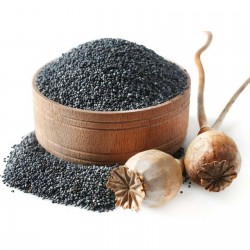
1000 to 10000 Seeds Op....
Price
€3.50
SKU: MHS 139
Seeds Gallery Com,
5/
5
<h2><strong><b>Opium Poppy<span style="font-size: 17.5px;"> </span></b>Seeds (Papaver Somniferum)</strong></h2>
<h2><span style="color: #ff0000;"><strong>Price for Package of 2000 (1g), 4000 (2g), 10000 (5g) seeds.</strong></span></h2>
<p>Papaver somniferum, the Opium poppy, is the species of plant from which opium and poppy seeds are derived. Opium is the source of many narcotics, including morphine (and its derivative heroin), thebaine, codeine, papaverine, and noscapine. The Latin botanical name means the "sleep-bringing poppy", referring to the sedative properties of some of these opiates.</p>
<p>The opium poppy is the only species of Papaveraceae that is an agricultural crop grown on a large scale. Other species, Papaver rhoeas and Papaver argemone, are important agricultural weeds, and may be mistaken for the crop.</p>
<p>It is also valuable for ornamental purposes, and has been known as the "common garden poppy", referencing all the group of poppy plants.</p>
<p>Poppy seeds of Papaver somniferum are an important food item and the source of poppyseed oil, a healthy edible oil that has many uses.</p>
<p><strong>Description</strong></p>
<p>Papaver somniferum is an annual herb growing to 100cm. All parts of the plant are strongly glaucous, giving a greyish-green appearance, and the stem and leaves are sparsely covered with coarse hairs. The leaves are lobed and clasp the stem at the base. The flowers are up to 120mm diameter, normally with four white, mauve or red petals, sometimes with dark markings at the base. The fruit is a hairless, rounded capsule topped with 12–18 radiating stigmatic rays. All parts of the plant exude white latex when wounded.</p>
<p><strong>History</strong></p>
<p>Use of the opium poppy predates written history. Images of opium poppies have been found in ancient Sumerian artifacts (circa 4000 BC). The making and use of opium was known to the ancient Minoans.[7] Its sap was later named opion by the ancient Greeks, from whence it gained its modern name of opium.</p>
<p>Opium was used for treating asthma, stomach illnesses, and bad eyesight.</p>
<p>The First and Second Opium Wars among China, the British Empire and France took place in the late 1830s through the early 1860s, when the Chinese attempted to stop western traders smuggling opium into their country.</p>
<p>Many modern writers, particularly in the 19th century, have written on the opium poppy and its effects, notably Thomas de Quincey in Confessions of an English Opium Eater</p>
<p>The French Romantic composer Hector Berlioz used opium for inspiration, subsequently producing his Symphonie Fantastique. In this work, a young artist overdoses on opium and experiences a series of visions of his unrequited love.</p>
<p>Opium poppies (flower and fruit) appear on the coat of arms of the Royal College of Anaesthetists.</p>
<p><strong><em>Legality</em></strong></p>
<p> Opium poppy cultivation in the United Kingdom does not require a license, but extracting opium for medicinal products does.</p>
<p> In Italy, it is forbidden to grow P. somniferum to extract the alkaloids, but small numbers of specimens can be grown without special permits for purely ornamental purposes.</p>
<p> Unlike in its neighbour countries Austria and Switzerland, where opium poppy is still cultivated legally, it has been delegalized in Western Germany after World War II, extending this regulation after German reunification in 1990 also to territories of former GDR, where opium poppy cultivation had remained legal until then.</p>
<p> In the United Arab Emirates, where the drug law is especially stern, at least one man was reported to have been imprisoned for possessing poppy seeds obtained from a bread roll.[9]</p>
<p> In New Zealand, section 9(4) of the Misuse of Drugs Act states, "It shall be a defence to a charge under subsection (1) [Cultivation of prohibited plants] if the person charged proves that the prohibited plant to which the charge relates was of the species Papaver somniferum, and that it was not intended to be a source of any controlled drug or that it was not being developed as a strain from which a controlled drug could be produced."</p>
<p> In northern Burma, opium bans have ended a century-old tradition of growing poppy. Between 20,000 and 30,000 ex-poppyfarmers left the Kokang region as a result of the ban in 2002.[11] People from the Wa region, where the ban was implemented in 2005, fled to areas where growing opium is still possible.</p>
<p> In the United States, opium is listed as a Schedule II controlled substance by the Drug Enforcement Administration. In addition, "Opium poppy and poppy straw" are also prohibited.[12] However, this is not typically enforced for poppies grown or sold for ornamental or food purposes.[4] Though the opium poppy is legal for culinary or æsthetic reasons, poppies were once grown as a cash crop by farmers in California; the law of poppy cultivation in the United States is somewhat ambiguous.</p>
<p>The reason for the ambiguity is because The Opium Poppy Control Act of 1942 (now repealed),[14][15][16] stated that any opium poppy should be declared illegal, even if the farmers were issued a state permit. § 3 of The Opium Poppy Control Act stated:</p>
<p> It shall be unlawful for any person who is not the holder of a license authorizing him to produce the opium poppy, duly issued to him by the Secretary of the Treasury in accordance with the provisions of this Act, to produce the opium poppy, or to permit the production of the opium poppy in or upon any place owned, occupied, used, or controlled by him.</p>
<p>This led to the Poppy Rebellion, and to the Narcotics Bureau arresting anyone planting opium poppies and forcing the destruction of poppy fields of anyone who defied the prohibition of poppy cultivation. Though the press of those days favored the Federal Bureau of Narcotics, the state of California supported the farmers who grew opium poppies for their seeds for uses in foods such as poppyseed muffins. Today, this area of law has remained vague and remains somewhat controversial in the United States. The Opium Poppy Control Act of 1942 was repealed on 27 October 1970.</p>
<p> The seeds themselves contain very small amounts of opiates,[4] and have no measurable narcotic effect in small quantities. See poppy tea. However, the television show MythBusters demonstrated that one could test positive for narcotics after consuming four poppy seed bagels. On the show Brainiac: Science Abuse, subjects tested positive after eating only two poppy seed bagels.</p>
<p><strong>Medicine</strong></p>
<p>Australia (Tasmania), Turkey and India are the major producers of poppy for medicinal purposes and poppy-based drugs, such as morphine or codeine.[23] The USA has a policy of sourcing 80% of its narcotic raw materials from the traditional producers, India and Turkey.[24]</p>
<p>A recent initiative to extend opium production for medicinal purposes called Poppy for Medicine was launched by The Senlis Council which proposes that Afghanistan could produce medicinal opium under a scheme similar to that operating in Turkey and India.[25] The Council proposes licensing poppy production in Afghanistan, within an integrated control system supported by the Afghan government and its international allies, to promote economic growth in the country, create vital drugs and combat poverty and the diversion of illegal opium to drug traffickers and terrorist elements. Interestingly, Senlis is on record advocating reintroduction of poppy into areas of Afghanistan, specifically Kunduz, which has been poppy free for some time.</p>
<p>The Senlis proposal is based in part on the assertion that there is an acute global shortage of opium poppy-based medicines some of which (morphine) are on the World Health Organisation's list of essential drugs as they are the most effective way of relieving severe pain. This assertion is contradicted by the International Narcotics Control Board (INCB), the "independent and quasi-judicial control organ monitoring the implementation of the United Nations drug control conventions". INCB reports that the supply of opiates is greatly in excess of demand.</p>
<p>In March 2010, researchers from the Department of Biological Sciences at the University of Calgary published an article in Nature Chemical Biology about their discovery of two enzymes and their encoding genes, thebaine 6-O-demethylase (T6ODM) and codeine O-demethylase (CODM), involved in morphine biosynthesis derived from the opium poppy.[27] The enzymes were identified as non-heme dioxygenases, and were isolated using functional genomics.[27] Codeine O-demethylase produces the enzyme that converts codeine into morphine.</p>
<p><strong>Medical cultivation in the UK</strong></p>
<p>In late 2006, the British government permitted the pharmaceutical company Macfarlan Smith (a Johnson Matthey company, FTSE 100) to cultivate opium poppies in England for medicinal reasons[29] after Macfarlan Smith's primary source, India, decided to increase the price of export opium latex. This move is well received by British farmers,[citation needed] with a major opium poppy field based in Didcot, England. As of 2012, they were growing in Dorset, Hampshire, Oxfordshire and Lincolnshire as a spring-sown breakcrop recognised under the single payment scheme farm subsidy.[30] The Office of Fair Trading has alerted the government to their monopoly position on growing in the UK and worldwide production of diamorphine and recommended consideration.[29] The governments response advocated the status quo, being concerned interference might cause the company to stop production.</p>
<p><strong>Use as food</strong></p>
<p>The opium poppy is the source of two food ingredients: poppy seed and poppyseed oil. The seeds contain very low levels of opiates,[4] and the oil extracted from them contains even less. Both the oil and the seed residue also have commercial uses.</p>
<p><strong>Poppy seeds</strong></p>
<p>Poppy seeds are commonly used in cuisine from many different cultures. They can be dry roasted and ground to be used in wet curry (curry paste) or dry curry. They have a creamy and nut-like flavor, and when used with ground coconut, the seeds provide a unique and flavour-rich curry base.</p>
<p><strong>Ornamental cultivation</strong></p>
<p>Once known as the "common garden poppy", live plants and seeds of the opium poppy are widely sold by seed companies and nurseries in most of the western world, including the United States. Poppies are sought after by gardeners for the vivid coloration of the blooms, the hardiness and reliability of the poppy plants, the exotic chocolate-vegetal fragrance note of some cultivars, and the ease of growing the plants from purchased flats of seedlings or by direct sowing of the seed. Poppy seed pods are also sold for dried flower arrangements.</p>
<p>Since "opium poppy and poppy straw" are listed in Schedule II of the United States' Controlled Substances Act, a DEA license may be required to grow poppies in ornamental or display gardens. In fact, the legal status of strictly ornamental poppy gardens is more nuanced, and destruction of ornamental poppy installations or prosecution of gardeners (except those caught extracting opium via capsule scarification or tea extraction) are virtually unheard of.[4] During the early spring, opium poppies can be seen flowering in gardens throughout North America and Europe, and beautiful displays are found in many private planters, as well as in public botanical and museum gardens (e.g., United States Botanical Garden, Missouri Botanical Garden, North Carolina Botanical Garden).</p>
<p>Many countries grow the plants, and some rely heavily on the commercial production of the drug as a major source of income. As an additional source of profit, the seeds of the same plants are sold for use in foods, so the cultivation of the plant is a significant source of income. This international trade in seeds of P. somniferum was addressed by a UN resolution "to fight the international trade in illicit opium poppy seeds" on 28 July 1998.</p>
<p><strong>Popular culture</strong></p>
<p>In the 19th century Thomas de Quincey wrote Confessions of an English Opium-Eater (1821). A book on Opium and allegedly the first book in the series of drug-addiction literature.</p>
<p>Recently, a feature film entitled The Opium Eater was released exploring the life of Eric Detzer and how he would go about acquiring opium poppies from flower shops and gardens in the Pacific Northwest (north of Seattle) to feed his addiction. This true story is based on an autobiography, Poppies: Odyssey of an Opium Eater written by Detzer, and starring David Bertelsen. Since the festival release of this film in Breckenridge, CO, eBay has stopped allowing the sale of opium poppy pods on their auction site. This may also be attributed to the death of a Colorado teen, who overdosed on opium tea around the same time.</p>
<p>What may be the most well known literary use of the poppy occurs both in L. Frank Baum's The Wonderful Wizard of Oz and in MGM's classic 1939 film based on the novel.</p>
<p>In the novel, while on their way to the Emerald City, Dorothy, the Scarecrow, the Tin Man, and the Cowardly Lion walk through a field of poppies, and both Dorothy and the Lion mysteriously fall asleep. The Scarecrow and the Tin Man, not being made of flesh and blood, are unaffected. They carry Dorothy to safety and place her on the ground beyond the poppy field. While they are considering how to help the Lion, a field mouse runs in front of them, fleeing a cougar. The Tin Man beheads the cougar with his axe, and the field mouse pledges her eternal gratitude. Being the Queen of the Field Mice, she gathers all her subjects together. The Tin Man cuts down several trees, and builds a wagon. The Lion is pushed onto it, and the mice pull the wagon safely out of the poppy field.</p>
<p>In the 1939 film, the sequence is considerably altered. The poppy field is conjured up by the Wicked Witch of the West, and it appears directly in front of the Emerald City, preventing the four travelers from reaching it. As in the novel, Dorothy and the Cowardly Lion fall asleep, but in a direct reversal of the book, the Scarecrow and the Tin Man are unable to carry Dorothy. Glinda, who has been watching over them, conjures up a snowfall which kills the poppies' narcotic power and enables Dorothy and the Lion to awaken. Unfortunately, the Tin Man has been weeping in despair, and the combination of his tears and the wet snow has caused him to rust. After he is oiled by Dorothy, the four skip happily toward the Emerald City.</p>
<p>In Baum's other Oz books, Oz's ruler, Princess Ozma, is often shown wearing poppies in her hair as decoration.</p>
<h2><a href="https://www.seeds-gallery.shop/en/home/1800000-fresh-seeds-1kg-organic-poppy-papaver-somniferum.html" target="_blank" title="Large packet of Poppy Seeds (1kg) can be bought HERE" rel="noreferrer noopener"><strong>Large packet of Poppy Seeds (1kg) can be bought HERE</strong></a></h2>
MHS 139 (1g)


Variety from Italy
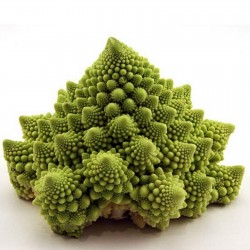
2000 Seeds Cauliflower...
Price
€11.00
SKU: P 58
Seeds Gallery Com,
5/
5
<h2><strong>2000 Seeds Cauliflower Romanesco</strong></h2>
<h2><span style="color:#ff0000;"><strong>Price for Package of 2000 (10g) seeds.</strong></span></h2>
<div>Romanesco cauliflowers are a fantastic variety from Italy, producing stunning yellow green heads of spiral rosettes with an excellent flavour visually that resemble a pine cone. Many Romanesco cauliflowers are spring maturing but this rare one that comes ready in the autumn (Oct-Nov), thus avoiding the need to overwinter it.</div>
<div>Start indoors in a warm, well-lighted area from early March through June for the earliest of crops. Sow seeds ¼" deep in good compost. Keep evenly moist. Seedlings emerge in 5-8 days at 70º F. They do best covered lightly with soil. Alternatively sow directly outside from early April.</div>
<div>Transplant seedlings by at least Mid summer. They grow best at 55º to 65º F. Do not let seedling become more that 5 weeks old because older seedlings do not mature well transplanted.</div>
<div>Set plants 18" apart in rows 24" apart. Transplant seedlings in late June for Oct - Nov head harvest.</div>
<div>Water deeply once a week in dry weather. Cultivate or mulch to control weeds. High fertility and abundant supply of water throughout the growing season are important.</div>
<div> </div>
P 58


Variety from Serbia
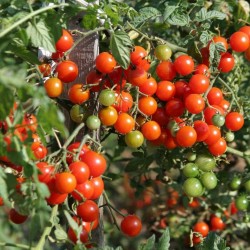
400+ Seeds Cherry Belle Tomato
Price
€5.50
SKU: VT 131
Seeds Gallery Com,
5/
5
<div id="idTab1" class="rte">
<h2><strong>400+ Seeds Cherry Belle Tomato</strong></h2>
<h2 class=""><span style="color: #ff0a0a;"><strong>Price for Package of 400+ seeds.</strong></span></h2>
<p>A splendid variety producing high yields of extremely tasty, cherry tomatoes. Sow end January-April, harvest June-September. Suitable for greenhouse or outdoors.</p>
<p>Culture: GREENHOUSE CULTURE: To grow in heated greenhouses sow January onwards, in a temperature of 16-18°C (60-65°F). Transplant into small pots. Plant out in large pots, growing bags, or into a soil border at 45cm (18") spacing. Pinch out side shoots regularly and when in flower tap or shake plants daily to aid setting. For growing in unheated greenhouses, sow in warmth, from March onwards. Plant late April-early May. Harvest mid August-mid October. OUTDOOR CULTURE: Sow in trays or pots indoors March-April and harden off the plants before planting 45cm (18") apart in early June. Choose a warm, sheltered position. Harvest mid August-mid October. Standard varieties: Support with stakes or canes. Pinch out the main growth when four good trusses have set. Bush varieties: These cease growing when 30-38cm (12-15") high. Dot not remove side shoots. Support is not essential, but short stakes will help control the plants and keep fruit clean.</p>
</div>
<script src="//cdn.public.n1ed.com/G3OMDFLT/widgets.js"></script>
VT 131 (1g)


Variety from Germany
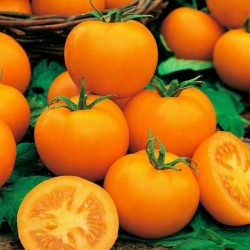
850 Seeds Goldene Königin...
Price
€15.00
SKU: VT 60
Seeds Gallery Com,
5/
5
<h2 class=""><strong>Goldene Königin Tomato 850 Seeds</strong></h2>
<h2><span style="color: #d0121a;"><strong>Price for Package of 850 (3g) seeds.</strong></span></h2>
<p>One of the oldest heirloom from Germany, known since 1886.</p>
<p>A yellow tomato, which can be cultivated both in greenhouses and outdoors. medium early, indet., regular leaf plants, yellow-orange fruit round, Fruits weight approx. 100 g and have a unique but somewhat sweet flavor excellent aroma. 5-6 golden fruits per cluster, 100 g, round, 6-8 cm in diameter.</p>
<p>The name means 'Golden Queen' in German, but this is not the same tomato as Golden Queen known in North America.</p>
<p> </p>
<p>Shape of fruit: Smooth Round</p>
<p>Fruit color: Yellow</p>
<p>Country of origin: Germany</p>
<p>Year established: 1886</p>
<script src="//cdn.public.n1ed.com/G3OMDFLT/widgets.js"></script>
VT 60 (3g)

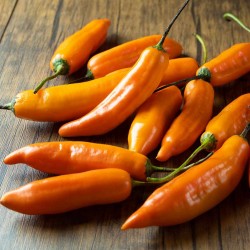
Aji Amarillo - Peruvian...
Price
€2.15
SKU: C 29
Seeds Gallery Com,
5/
5
<h2><strong>Aji Amarillo - Peruvian Chili Pepper Seeds</strong></h2>
<h2><span style="color: #ff0000;"><strong>Price for Package of 10 seeds.</strong></span></h2>
<p>Aji Amarillo, also known as asaji escabeche or Peruvian chiles, are important to Peruvian cuisine for their use as a condiment (when mixed with red onion and cilantro).</p>
<p>30,000-50,000 Scovilles. Since “Amarillo” is the Spanish word for yellow, and “Ají” is the term for chile in South America, this pepper is also appropriately known as the “yellow chile.” The Ají Amarillo is grown in all areas of Peru. Used by the Incas, it is still the most common and popular chile in that country.</p>
<p>The chili plant is tall and needs staking as the pods weigh the branches down once it pods up. All our Aji Amarillo chili plants are in pots and grow to over 1.5m tall. A great producer of around 15 cm long and about 2.5cm wide pods. The pods start odd green and go to an amazing orange color.</p>
<p>It may be said that is it possibly the most important ingredient in Peruvian cooking.</p>
<p>Like other chiles from this area, the Amarillo has a fruity, berry-like flavor. It is medium in heat level, but it does not leave your mouth burning. It is also great as a condiment.</p>
<script src="//cdn.public.n1ed.com/G3OMDFLT/widgets.js"></script>
C 29 (10 S)


Variety from Peru
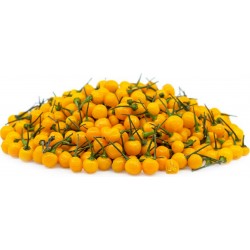
Aji Charapita Chili 500 Seeds
Price
€70.00
SKU: C 24 (0.9g)
Seeds Gallery Com,
5/
5
<h2><strong>Aji Charapita Chili 500 Seeds World’s Most Expensive Chili</strong></h2>
<h2><span style="color: #ff0000;"><strong>Price for Package of 500 (0,9 g) seeds.</strong></span></h2>
<p><span style="color: #000000;"><strong>Our Charapita plants 2019 growing just fine (see pictures)</strong></span></p>
<p><span style="color: #000000;"><strong>As you can see yourself from our photos, that the seeds are from our own plants (organically grown) and you know what you will get from the seeds you buy from us...</strong></span></p>
<p>You should never judge a pepper by its size, especially when it comes to price. The Aji Charapita chili pepper grows is roughly the size of a pea, but there’s nothing small about its price. <span style="color: #000000;"><strong>A kilogram of this stuff will set you back a whopping 20,000 Euro.</strong></span></p>
<p>Native to the jungles of norther Peru, the Aji Charapita is known as a wild pepper, and has only recently recently being cultivated for commercial use. Used fresh, this tiny pepper is said to have a strong fruity flavor that gives salsas and sauces a tropical taste, but it is mostly used in powdered form to a bit of spiciness to various dishes. Although still fairly unknown in most Western countries, the Aji Charapita is a highly sought-after treat among chili pepper connoisseurs and five-star restaurant chefs.</p>
<p>Getting your hands on a few Aji Charapita peppers is a daunting task, for two very simple reasons. First of all, it is very difficult to source outside of Peru, unless you’re willing to buy some seeds online and plant them yourself, and even if you manage to find a seller, the price is probably going to curb your enthusiasm. Nicknamed “<strong>the mother of all chilli</strong>” Aji Charapita reportedly costs a minimum of $25,000 per kilo, making it the most expensive chili pepper in the world, and one of the most expensive spices, along with vanilla and saffron.</p>
<p>With a Scolville hotness rating of between 30,000 – 50,000 heat units, the Aji Charapita will burn a hole through your tongue as well as your wallet. This rating makes it about as hot as a cayenne pepper and four to twenty times hotter than the jalapeño.</p><script src="//cdn.public.n1ed.com/G3OMDFLT/widgets.js"></script>
C 24 (0.9g)



